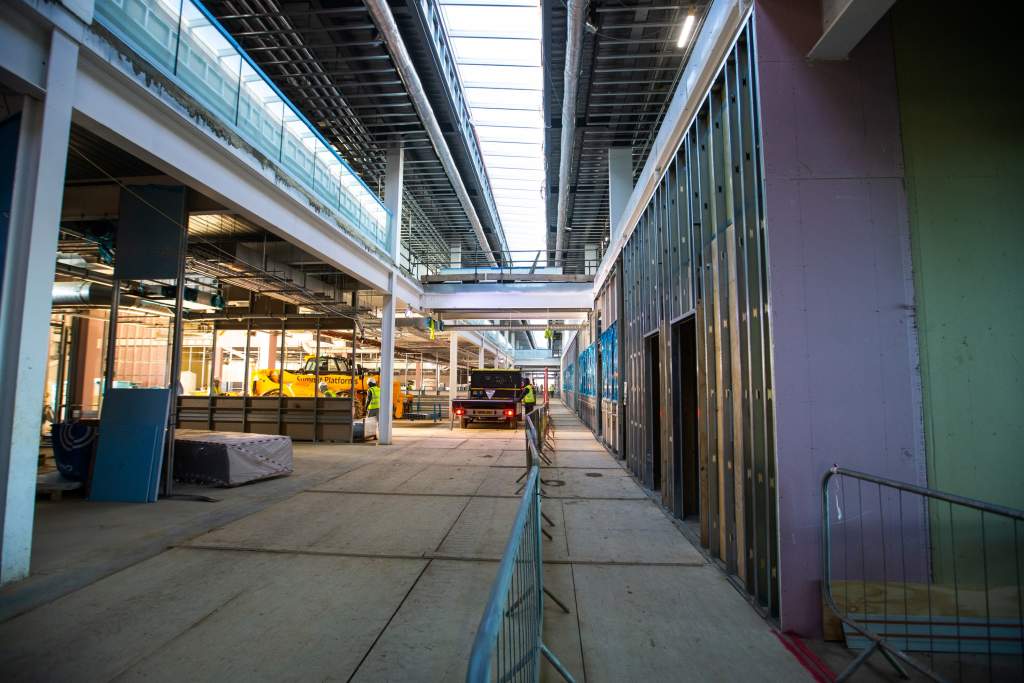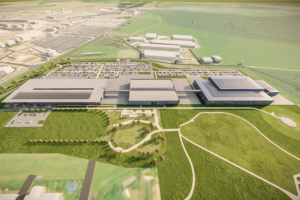Up Next

For all the progress the team formerly known as Jordan has made since the consortium headed by billionaire businessman Lawrence Stroll bought it in August 2018 – the victory in the 2020 Sakhir Grand Prix, its transformation into Aston Martin Racing, the aggressive recruitment – it won’t be until May next year that it makes the key step.
That’s when the team is scheduled to move into its “game-changer” new factory.
That timeline might slip a little and it won’t be until the middle of 2024 that its new state-of-the-art windtunnel is fully operational, but this facility is of seismic significance to the team.
While a building (in this case three buildings) is not the team, Aston Martin is currently bursting at the seams so the move to its new campus, which has already been delayed significantly by the outbreak of the COVID-19 pandemic in 2020, is eagerly anticipated by everyone working there.
The Race was among selected media to be given a tour of the new factory, located adjacent to the current Aston Martin base opposite the main entrance of Silverstone circuit, to get a feel for the scope of the facility. It’s still very much a building site, but it’s clear that once complete it will be exactly what you’d expect of a leading F1 team, rather than one sometimes punching above its weight out of a facility it has long since outgrown.
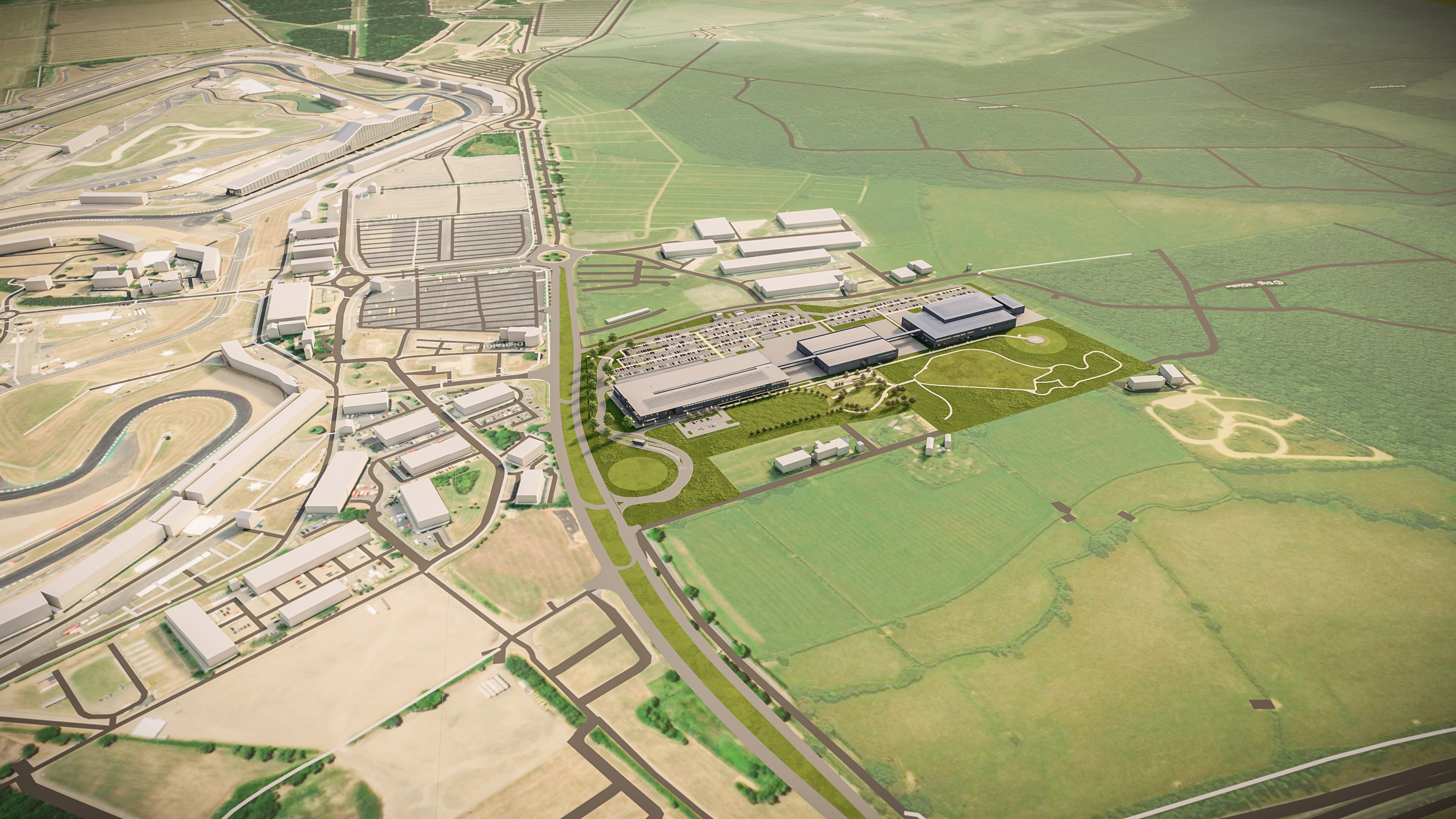
Project manager Guy Austin says “they are just so impatient to get in here” of the eagerness of the senior management to occupy the new home he calls “a game-changer”. And you can see exactly why. After our tour, Aston Martin team principal Mike Krack is asked about the use of that word, and also whether he believes this new factory will be the best facility in F1.
“The second question is easy to answer, I think yes,” says Krack.
And when it comes to those ‘game-changing’ elements, he’s equally certain that term is appropriate – and it’s as much about the human and collaboration aspects the new factory will enable as any technology upgrade.
“The fact you can talk to people without having to arrange meetings facilities makes the dialogue massively [more] than the remote locations that we have.
“The other thing is obviously logistics. It will be massively different and massively easier. So I fully agree on using the name ‘game-changer’ for team dynamics and logistics.”
Krack is getting to the heart of the wider benefits of such a facility. Yes, to an extent it’s all about the quality of the equipment, ensuring everyone has the tools they need to do the job and being able to fit all the staff and facilities in. But the new factory also embodies the working practices of the team. The new Aston Martin base is designed and built from scratch to serve those requirements.
On the first floor of Building One is the design office. At the centre of this open-plan space will sit chief technical officer Andy Green and technical director Dan Fallows. They won’t be walled off, men apart, but part of a team where the flow of information, ideas and conversations isn’t impeded by geography.
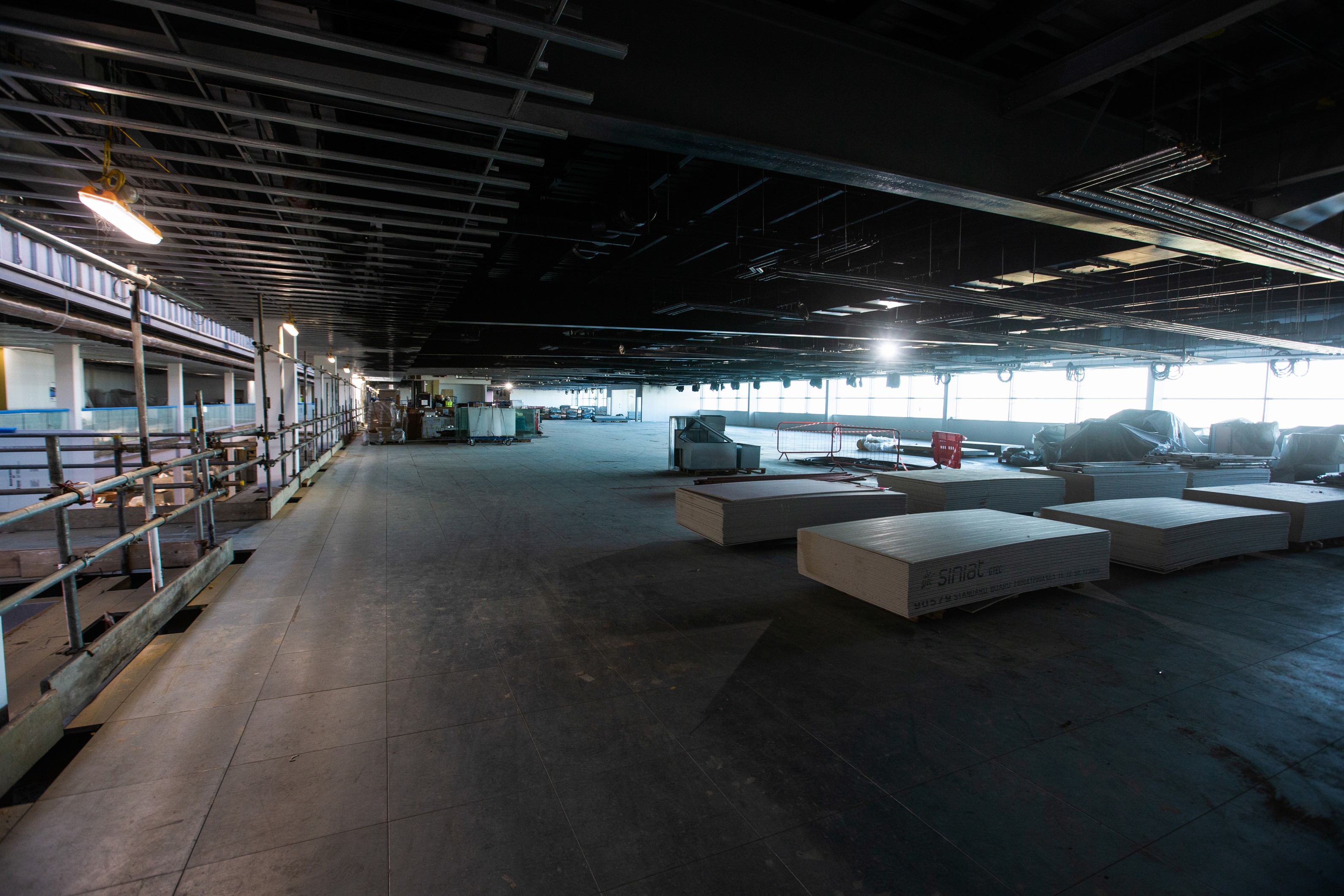
“It’ll change it significantly,” says Fallows of the impact this open plan layout will have on the working dynamic.
“We’ve [currently] got this small factory, we have these modular buildings to the side where we have some people who are not necessarily designing parts but they are connected to our design process. And having them not in the same room just makes it slightly more difficult to communicate with them.
“I’ve been in a big open-plan office before with the ability to be able to walk around and talk to people very easily and it makes a huge difference in terms of those interactions.
“And particularly the serendipitous interactions where you can have a chat with somebody about one thing and go on to talk about a lot of other things, they often end up being the most creative conversations. That’s what we’re trying to build.”
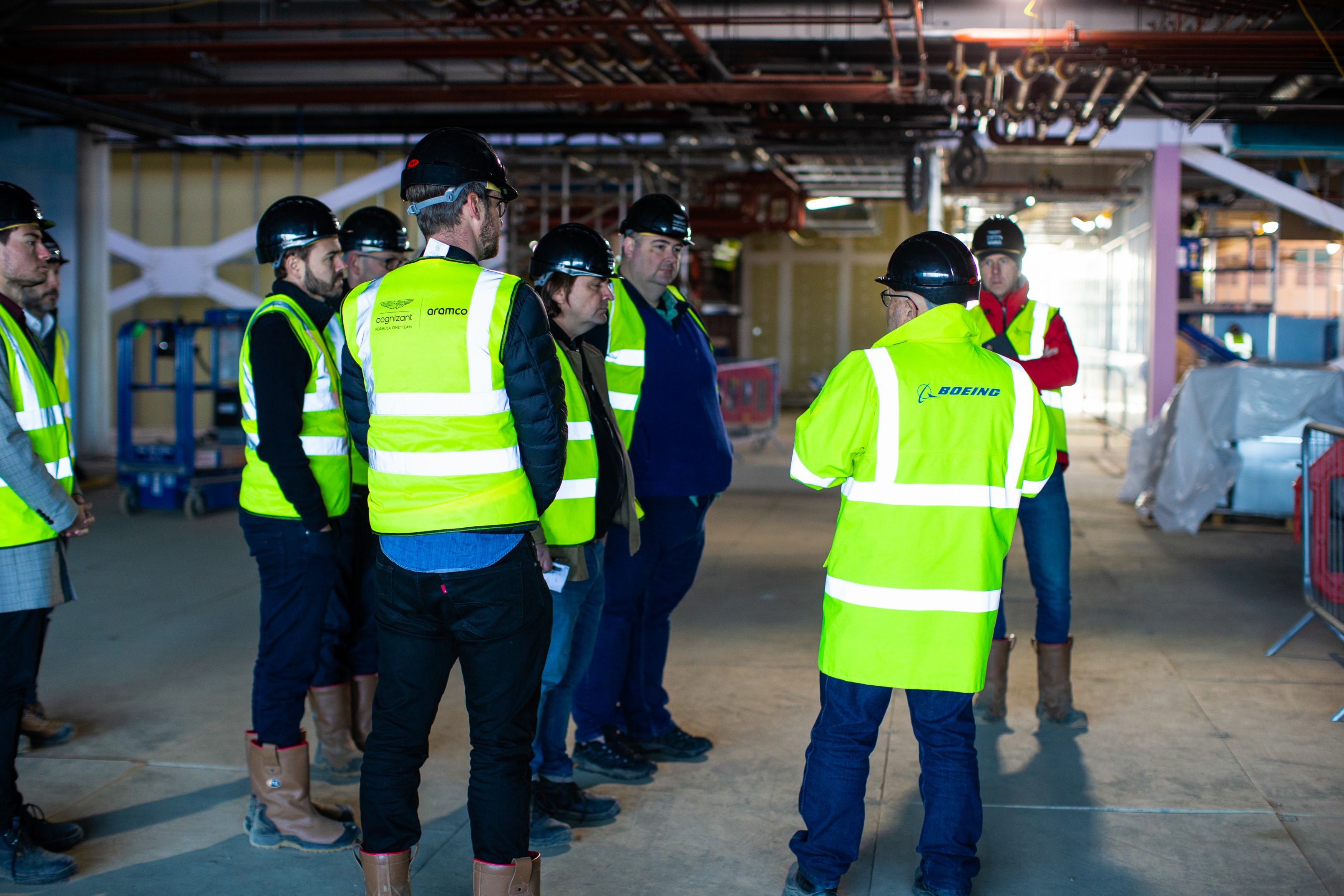
The design office will be well-illuminated, partly by the skylights adjacent to it that run the length of the building above ‘the street’. This runs 160 metres through the length of building one, offering not just the natural light that staff throughout will benefit from, but also aiding communication and access.
For while the upper floor houses the design office, race support room and senior management officers – among other departments – the lower floor is what might be called the more industrial space.
Various composites departments (including four autoclaves), electronics, the pattern shop, the race shop and multiple other manufacturing departments are located here. The efficiency of their layout translates to other efficiencies that are essential under the cost cap.
Not only does the new building eliminate the inefficiencies inherent in the current team set-up, but it also incorporates technology that will better track its processes. It’s a “smart factory” that will allow closer monitoring and analysis, allowing a team that is operating at the cost cap to squeeze the most out of every penny.
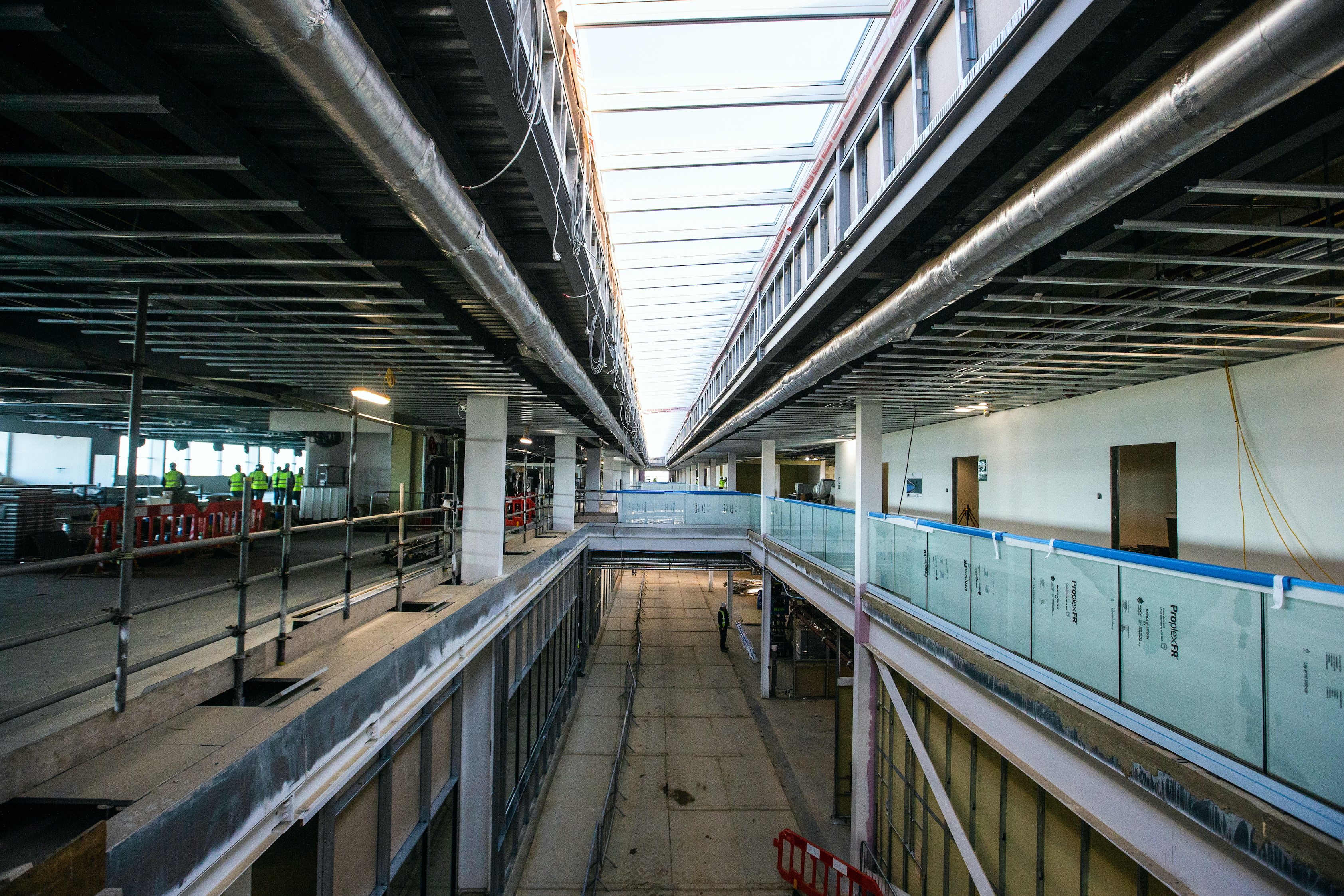
“We have the ability when everything is on site to be able to be much more detailed in terms of the analytics, detailing the production process and actually analysing that in a way that allows us to improve it much more so than if you’re using external people,” says Fallows. “That’s probably the key difference.”
That efficiency is also reflected in the ability to take more manufacturing in-house. Not only does that mean potentially better and cheaper parts, but certainly a faster turnaround.
“Efficiency covers pretty much all of it really,” says Fallows when asked by The Race about the production benefits of the new facility. “It’s efficiency in terms of costs, it’s efficiency in terms of time.
“One of the things that marks out a competitive team is its ability to turn things around quickly, to go from design to reality in the shortest possible time. So there’s great leaps forward you can make in efficiency with that type of facility. And obviously, under a cost cap world anything you can do which maximises the efficiency of the cost of those parts is worth doing.”
Krack suggests this could equate to “one or two upgrades more” over a season”. That’s an imprecise measure, but it illustrates the benefits of taking full control over your own destiny in terms of producing the car. Save, of course, for the parts it currently takes from Mercedes – not only the power unit but also the gearbox and rear suspension.
Fallows says the team is “open-minded” about whether it will lean less on Mercedes in the future. But while that’s likely to be more of a long-term ambition, it’s difficult to imagine a team with such lofty aspirations not striking out on its own at some point with its gearbox and suspension design rather than having to follow the lead of Mercedes.
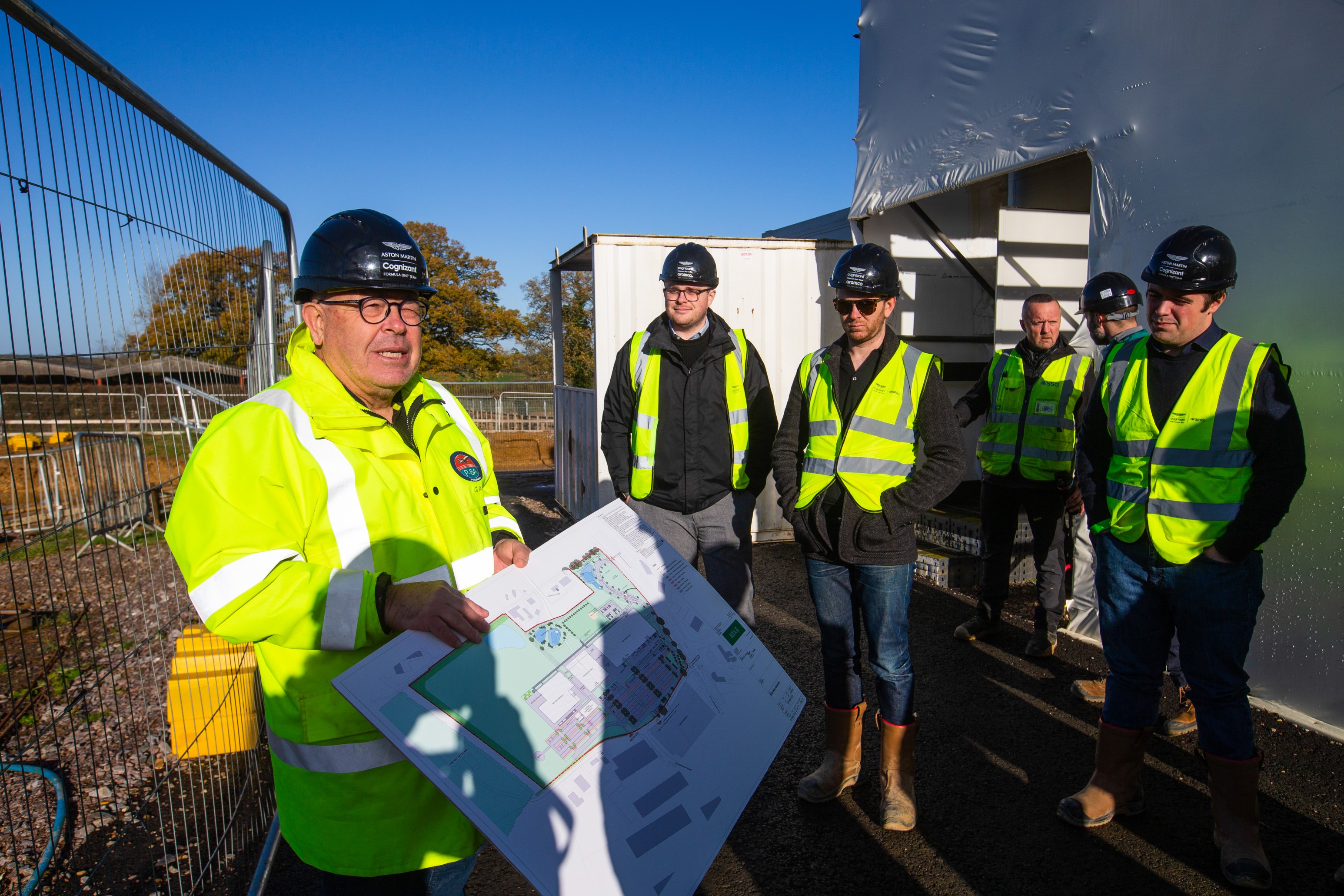
A significant part of the new campus is Building Three. This houses what Fallows describes as its “state-of-the-art” windtunnel, scheduled to be fully operational in the middle of 2024.
Originally, a new windtunnel wasn’t part of the plan given F1’s tentative plans to outlaw their use. But with the appetite for this rule change rapidly fading, Green made a compelling case for a new windtunnel and Stroll signed off on it.
While you can question the wisdom of his placement of son Lance – a solid but far from extraordinary F1 driver – in the team, you can’t argue with the wider commitment made by Stroll to this organisation.
“The target for the windtunnel is to be online in the middle of 2024,” says Fallows. “ So we’re hoping that that will have at least some contribution to the AMR25.
“Depending on how the commissioning and things of the tunnel goes, that will be probably the first car that will be able to have a significant impact with the new tunnel.”
While bringing a new windtunnel online isn’t quite as simple as building it and moving in – that’s a process explained by McLaren technical director James Key here – confidence is high that it will quickly be making an active contribution. Until then, Aston Martin has the use of the Mercedes F1 windtunnel.
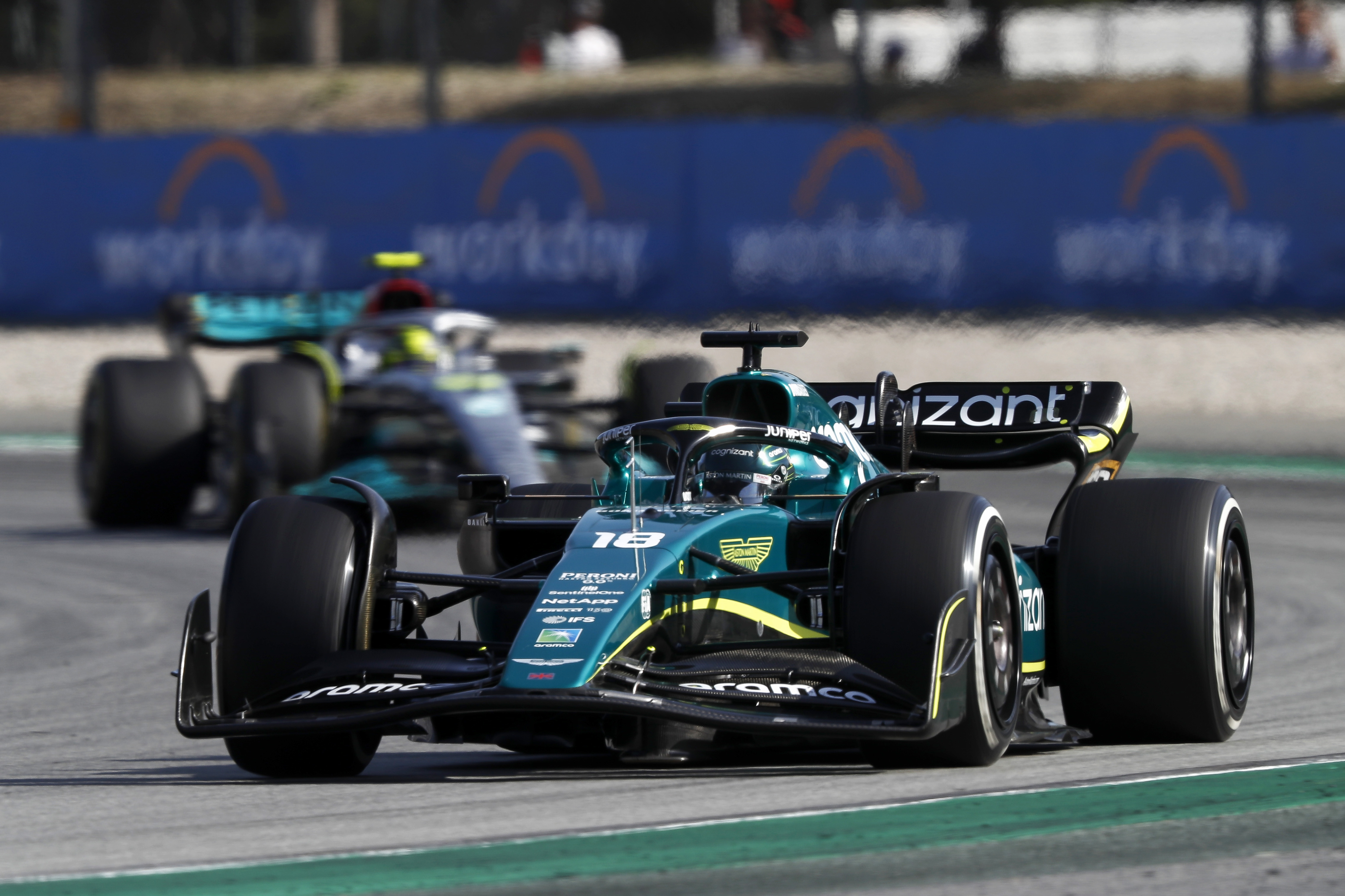
“Inevitably, when you build a windtunnel you have to go through a commissioning process and that’s really just to determine that it’s going to give you the numbers do you expect to see,” said Fallows when asked by The Race about the process.
“And obviously, we’re fortunate enough to be able to be testing in the Mercedes windtunnel, which is a very high-quality facility. So we need to make sure that our new facility is giving results that are consistent with those. And that does take a certain amount of time, but there are things that we can do to speed up that process. The target is to get in there as soon as we possibly can.
“There’s no doubt that it will be a world-class facility. And having access to that 24/7, if required, is very important.
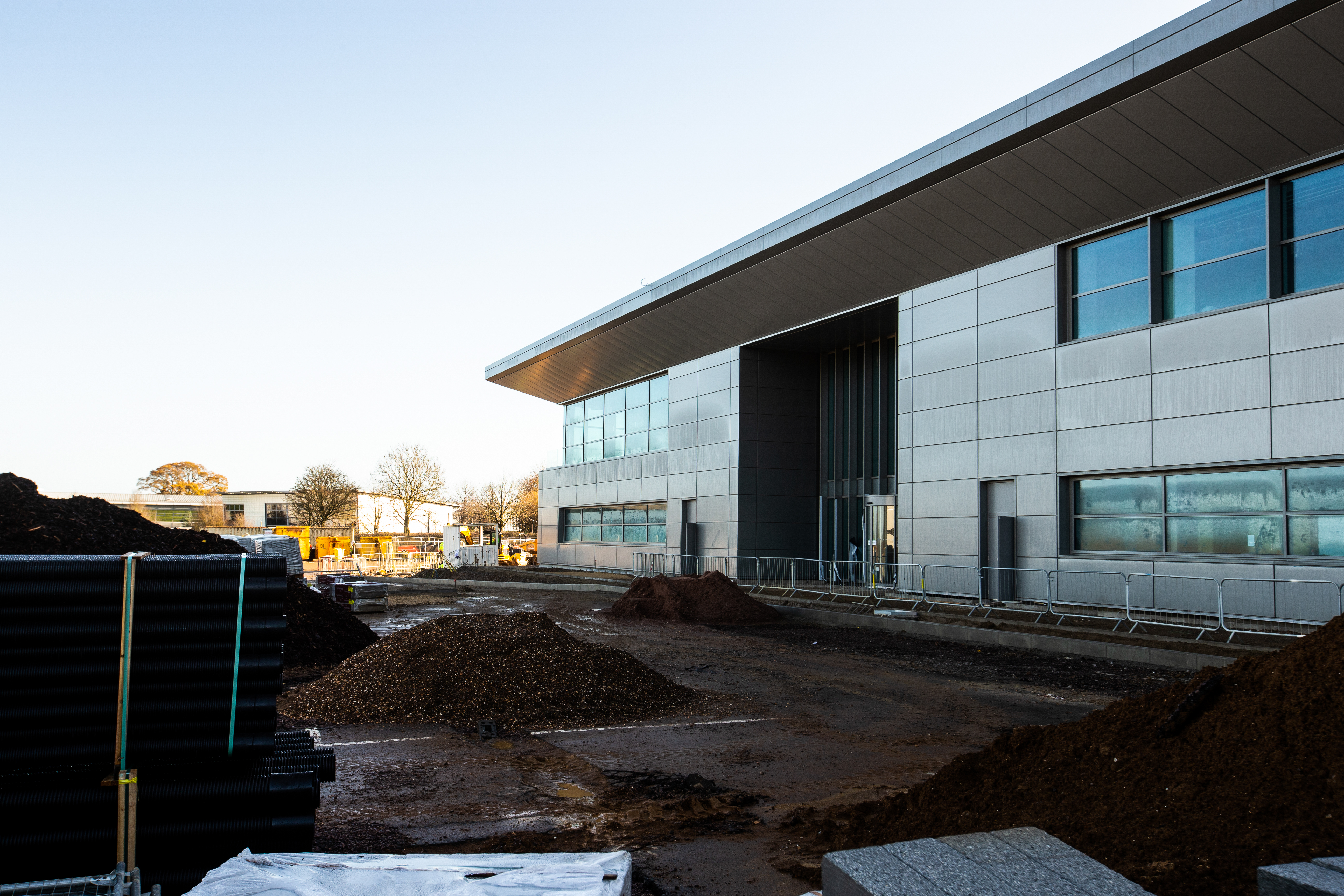
“As we improve and our windtunnel-run availability from the aerodynamic testing restrictions goes down, clearly we wouldn’t be spending as much time in the tunnel. But having your own facility means you can do other experiments as well, which is invaluable. And it’s something we don’t necessarily have the luxury of doing when we’re sharing a tunnel with another team.”
As part of the commitment to well-integrated working, the windtunnel building will be connected to Building Two – which will house the staff gym, events space, commercial department and more – by a covered walkway. There will be the same connection between Building Two and Building One, ensuring there’s no disincentive to moving between departments on wet and cold days. Again, communication is critical.
All of this points to a campus that not only will have everything it needs in terms of facilities, but that also tackles the human factor. Add to the mix the location, with wildflower meadow, scenic ponds to provide rainwater run-off and the Silverstone-shaped running track in the grounds – and it should be a vast improvement as a working environment. No wonder the team employees who have taken up the offer of Friday tours of the developing facility can’t wait to move in.
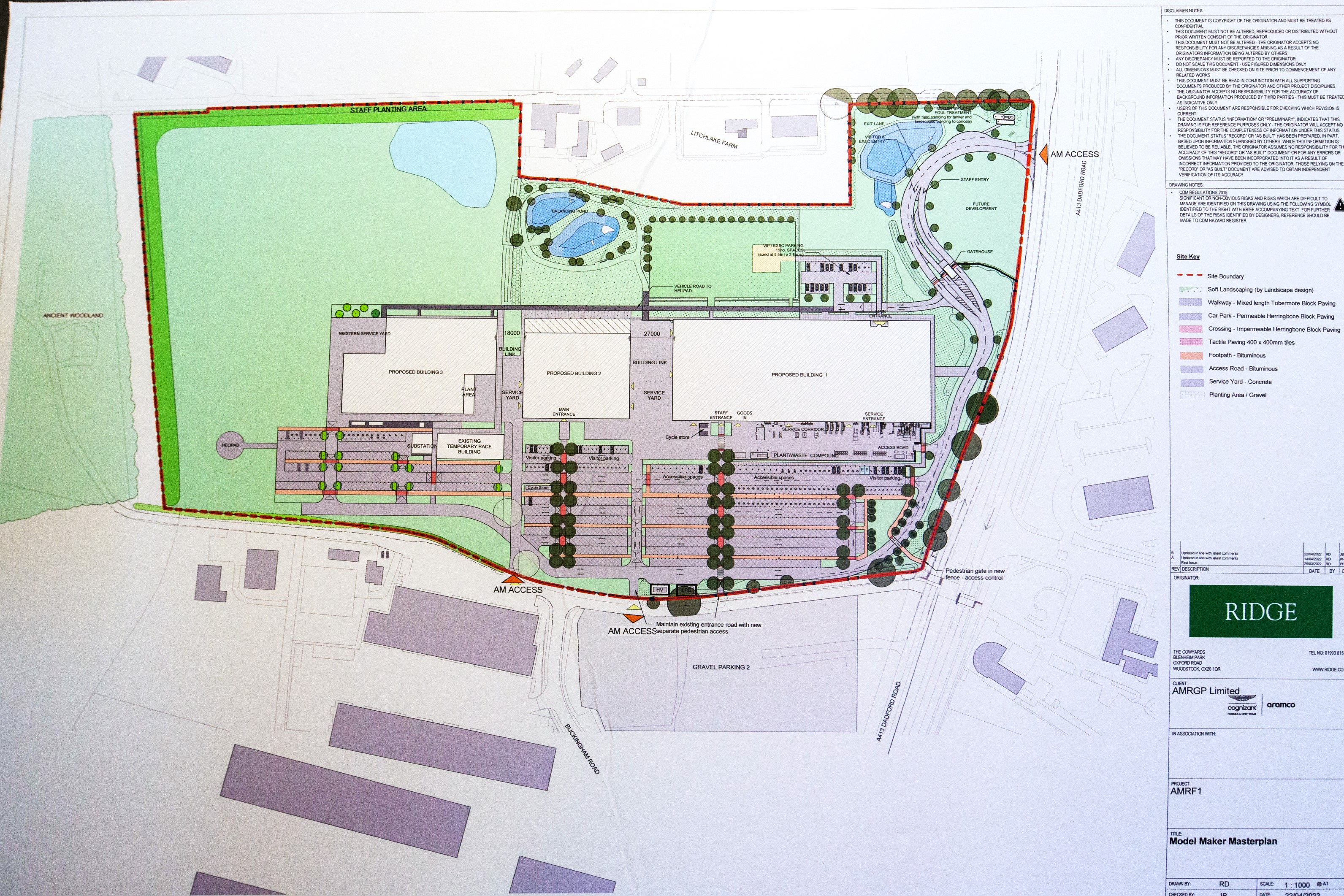
“The first step is obviously moving into the factory and then the other parts will come online,” says Fallows. “They are all positive steps for us but building this team is a journey and each of these things are milestones in that journey. They all contribute to our ability to operate the level we want to operate at.
“The last phase of it, the employee experience, the wellness side of things and the gym, are almost as important as the initial stages. But demonstrating that we are going that way, that we are looking at these things is almost part of the solution in itself because that’s what engages people. It’s knowing that we are thinking about them.
“We want them to operate at a good level, but we also want them to feel like they’re supported and part of a team that they want to be part of.”
Whether Aston Martin makes good on its F1 ambitions remains to be seen. But if it fails, it won’t be for lack of trying.
Its new facility is well-conceived – not just bricks and mortar and expensive equipment but also tailored to the personnel who will work in it – and, if it lives up to expectations, optimised for F1’s new cost-cap era. There can be no questioning the level of investment.
Such a facility is no guarantee of success, but it is a prerequisite for it. And once the team moves in next year and gets its windtunnel up and running in 2024, there really will be no excuses if it doesn’t live up to its ambitions in the middle years of the decade.


